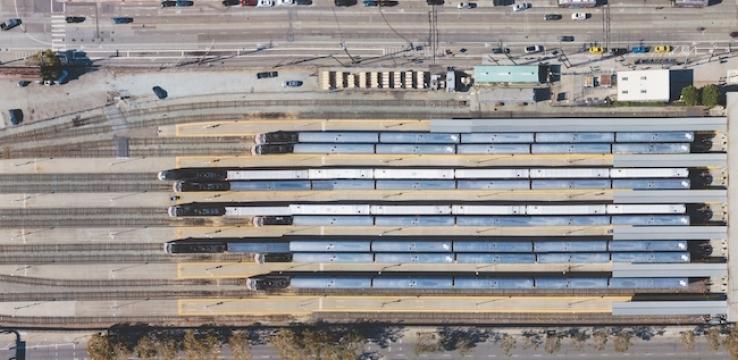What Happened: California passed a historic $5 billion-a-year transportation funding package.
What It Means: SB 1 raises more than $5 billion per year in perpetuity, equivalent to a 45 percent increase over current funding. Not only does the bill solve big problems for cities and transit agencies across the state, it shows that California can raise significant funding for transportation in an era of dwindling federal resources.
For years, transportation advocates and local elected officials hammered the message that California has a $59 billion backlog of state highway repairs and a $75 billion backlog for local streets and roads. The message was nally heard, and the legislature went big.
Senate Bill 1 has been called a “road bill,” but that is misleading. Yes, the vast majority of the funds are devoted to roadways, but the focus is very much on maintenance rather than expansion. The single program focused on traffic congestion (a new $250-million-per- year competitive program) receives only about 5 percent of the funds annually and excludes almost all highway widening projects.
By contrast, public transit will receive more than 10 percent of the annual funds , providing transit operators statewide with increasingly predictable funding. In addition, the bill dedicates $245 million per year to the Transit and Intercity Rail Capital Program, which funds upgrades and expansions for statewide rail projects. The bill also includes a new commuter rail program that will help support Caltrain (its San Francisco railyard is shown above), SMART and ACE services. Finally, bicycle and pedestrian projects are expressly called out as eligible for funding. In the Bay Area alone, the bill is expected to provide about $230 million more per year in increased road repair funding to cities and counties.
Most importantly — and surprisingly — SB 1 reaffirmed the state’s commitment to funding transportation with transportation-related user fees, namely fuel taxes and motor vehicle fees. You have to go back to 1981 to find the last time legislators voted to raise the gas tax. One of the most remarkable aspects of SB 1 is that its funding sources are indexed to the consumer price index, so they don’t lose value each year. (The only new tax or fee in SB 1 that isn’t indexed is an increase in the sales tax on diesel fuel, which will rise and fall along with the price and consumption of diesel.)
Looking forward, it’s clear that no single piece of legislation can solve all the Bay Area’s transportation funding challenges. Of the $300 billion slated to be spent on transportation in the Bay Area in the next 20 years, SB 1 won’t change the fact that less than 10 percent ($29 billion) will be used to expand our transportation system. Passing SB 1 required years of compromise, dialogue between hundreds of different interest groups, strong focus on spending priorities and the best revenue sources, and thinking at a scale that actually solves problems. It’s a bill that shows us a path for how to get something big done for transportation statewide.

